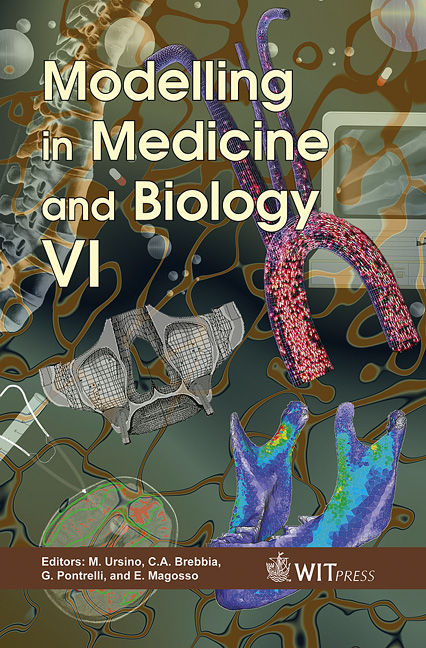Multibody Dynamics Approaches Of The Humerus-shoulder Complex Driven By Multimuscle Activations And Constraints
Price
Free (open access)
Transaction
Volume
8
Pages
15
Published
2005
Size
697 kb
Paper DOI
10.2495/BIO050401
Copyright
WIT Press
Author(s)
T. Tsuta, Y. Takeda & T. Iwamoto
Abstract
A multibody dynamics approach of the humerus-shoulder complex (HSC), driven by a musculoskeletal system has been developed in this paper, and the continuum mechanics modeling of skeletal-muscles with the evolutional constitutive law of Hatze has been created at the same time. The constitutive equations are formulated using the link coordinates at first, and then transformed to the common global coordinate system. Based on the updated Lagrangian approach, the human multibody dynamics for a multiple bone-joints system driven by muscle activations has been formulated using the kinetic and potential energies stored in the respective muscles and bone-joint system. Since the governing equations of motion and the dynamic equilibrium equation includes statically indeterminate problems such as the multimuscles constraint for joint torques, they have been formulated, and solved, using Lagrangian multiplyer approaches, under prescribed constraint and applied load conditions. Finally, an actual application to the assistive technology of a stand-up motion, aided by the humerus-shoulder complex for lifting one’s own upper body, has been analysed and compared with those of experiment, and the applicability of the method developed has been clarified. Keywords: humerous-shoulder complex, multimuscle activations and constraints, multibody dynamics, updated Lagrangian approach, Lagrangian multiplyer’s approach, muscle’s statically indeterminate problems, application to assistive technology.
Keywords
humerous-shoulder complex, multimuscle activations and constraints, multibody dynamics, updated Lagrangian approach, Lagrangian multiplyer’s approach, muscle’s statically indeterminate problems, application to assistive technology.





